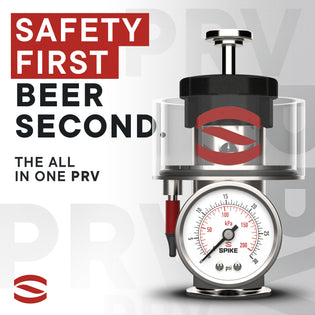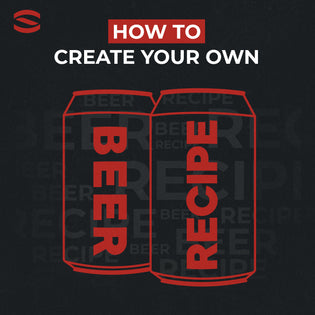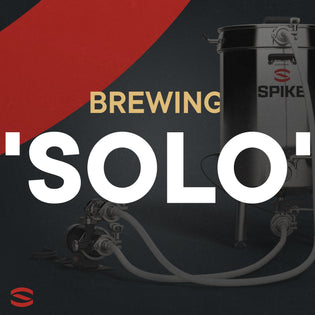By Matthew Bush
Crafting the perfect hoppy beer requires a lot of attention to detail, from selecting the right ingredients to carefully controlling the fermentation process. Oxygen is an important piece to that process (for more on this, check out the Spike Oxygenation Kit), but what about oxygen after fermentation?

The cold side of brewing, including packaging, carbonation, and conditioning, can have a significant impact on the final product. In particular, the amount of oxygen that beer is exposed to during these stages can have a significant impact on its flavor, aroma, and shelf life. In this post, we'll explore the concept of cold side low oxygen practices and why they are crucial for crafting high-quality hoppy beers. We'll cover the importance of minimizing oxygen exposure, the various techniques that brewers can use to achieve this goal, and some specific best practices for hoppy beers. Whether you're a homebrewer or a professional brewer, understanding and implementing cold side low oxygen practices can help take your hoppy beers to the next level.

Why are Low Oxygen Practices Important for Hoppy Beers?
Hoppy beers are known for their bold hop aroma and flavor, which can be easily degraded by exposure to oxygen. Oxidation can cause the beer to develop off-flavors, such as cardboard or sherry-like notes, and can also diminish the beer's hop character. Ultimately, if you're brewing hoppy beers, you want to showcase the aroma and flavor of the hops as much as possible, and minimizing oxygen exposure is one of the most critical steps to achieving that goal.
The cold side of brewing, including packaging, carbonation, and conditioning, presents several opportunities for oxygen to enter the beer. As a result, brewers need to be mindful of these stages and implement specific techniques to reduce oxygen exposure. By implementing cold side low oxygen practices, brewers can ensure that their hoppy beers taste as fresh and flavorful as possible, while also improving the beer's stability and shelf life.

Fermenting Under Pressure
One of the most foundational ways to reduce oxygen exposure throughout fermentation is making sure your fermentation vessel is sealed and oxygen free. One of my favorite ways to achieve this is to ferment under a slight amount of pressure during primary fermentation. This ensures that there is always CO2 displacing oxygen without putting too much stress on the yeast.
The All-In-One PRV makes it super easy to dial in a low setting early on in fermentation, then build or add pressure later without needing to add or remove any fittings. Allowing the pressure to build a bit towards the end of fermentation has the added benefits of blowing off fewer volatile hop compounds (keeping more of that wonderful aroma in the beer), as well as getting a jump start on a pressurized cold crash or carbonation.

Dry Hopping
Hoppy beers are characterized by the flavors and aromas only achievable through dry hopping. This presents a major challenge when trying to mitigate oxygen exposure, as you have to open the vessel to add hops.
My solution to this is to use a purgeable “dry hopper” that attaches to a tri-clamp port on the lid. The sight glass and funnel are attached to a butterfly valve which is kept open until I’m ready to use it, allowing it to fill up with CO2. When it’s time to dry hop, the valve can be closed, and the pressure released. After adding hops, I add CO2 using the gas in post on the lid, then purge by pulling the pressure relief valve and repeating a few times before dropping into the fermenter.
Using the 3 Port Lid allows me to keep this connected at all times, not having to swap out attachments and risk further oxygen exposure.

Pressurized Cold Crash
When it comes time to cold crash, an oxygen related issue brewers often run into is the vacuum that’s created when dropping temperature. This can lead the vessel to draw in oxygen if mitigation techniques aren’t put in place. The easiest way around this is to ensure you have a fermentation vessel capable of handling pressure.

All Spike’s fermentation tanks can handle up to 15PSI, so there is no problem adding enough positive pressure before cold crashing to ensure the beer can reach equilibrium as the temperatures drop. This is another chance for the All-In-One PRV to shine — with the included gas post you can simply adjust the knob and add CO2 to your desired pressure before cold crashing.
Packaging
When it comes to packaging, most homebrewers opt for kegging as the easiest, fastest way to transfer their beers without risking oxygen exposure — but there are still many opportunities for this to go wrong. The biggest thing to consider when transferring is to make sure that the transfer is closed, meaning both the fermenter and keg are sealed, with no beer being exposed to oxygen. This is typically done by connecting a line from the racking port on your fermenter, directly to the “beverage out” post on your keg, allowing the keg to fill from bottom to top. The Closed Pressure Transfer Kit contains everything you need to get started.
Although this will mitigate most oxygen exposure, there are still opportunities for oxygen ingress lurking in the keg and transfer lines. It is important to purge both the transfer lines and keg of oxygen prior to starting the transfer. I do this by pressurizing my lines (more on this in a moment) as well as the keg, then attaching a spunding valve to the gas in post on the keg. This allows the keg to displace CO2 with beer as it’s pushed in from the pressurized fermenter, ensuring there is nothing but CO2 and beer in the keg.

Transferring super hoppy beers can present its own challenges outside of the topic at hand. Heavy dry hopping can lead to sluggish transferring, and sometimes clogs. Fixing an issue like this in the middle of transferring opens the beer up to oxygen, so many look for ways to filter at some point in the transfer line. I do this by attaching a tri-clamp filter to a tee fitting that has a gas-in post. Before starting my transfer, I pressurize the entire setup and line, then push into the keg to purge all of it in one go. If the filter happens to clog while transferring, I can close everything up, clean the filter, then pressurize and purge the line again if needed.

Final Thoughts
We’ve learned about the toll oxygen exposure during the brewing process can have on flavor, aroma, and shelf life. As we’ve seen, there are various points during fermentation, dry hopping, cold crashing, and packaging that can put the beer we’ve worked so hard for at risk — but we’ve also seen that there are some relatively low effort ways to combat these issues, many of them are achievable with just a few slight gear and process tweaks. If you haven’t already, I encourage you to give some of these ideas a try on your next hoppy brew — I think you’ll be surprised at just how easy it is to keep those beers bright, aromatic, and delicious until the last drop.

Hi, I'm Matt. I've been brewing as Flat Roof Brewing for the last decade, and currently live in Grand Rapids, MI. I make beer that embodies the rich tapestry of people, places, and experiences that inspire me in the Great Lakes region — brewed on a slight slant from the Furniture City.
More Articles
How to Cold Crash Process Guide





